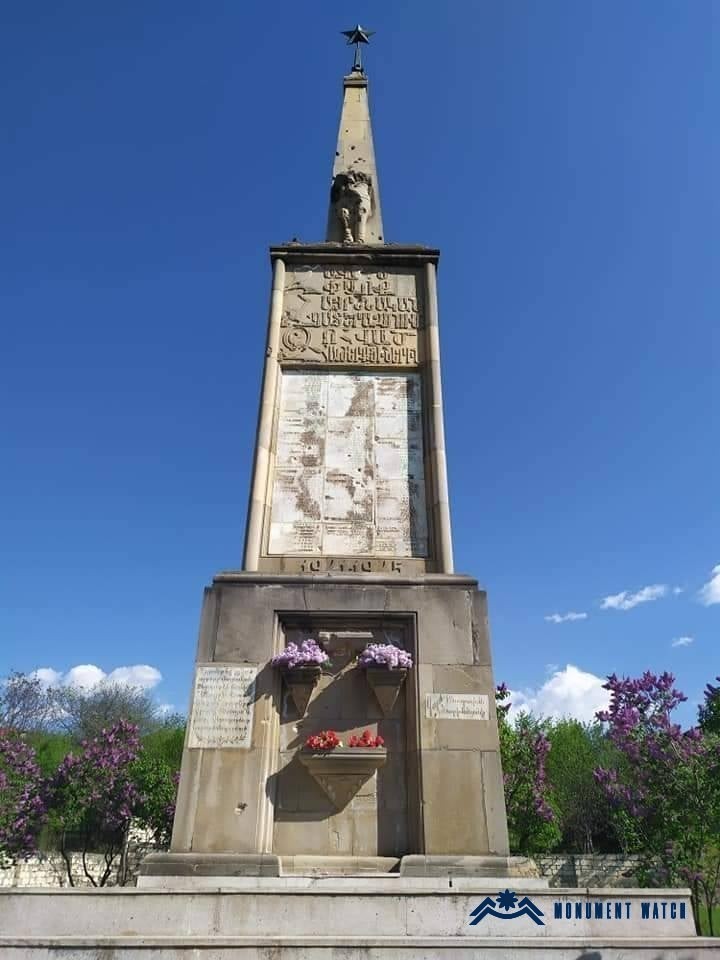Monument to the Victims of the Patriotic War destroyed in the village of Haterk, Artsakh
On December 17, 2024, a video was shared on the TikTok platform (https://www.tiktok.com/@09_parfum/video/7449331303104728327?_t=8sJuU8mUwlj&_r=1) clearly showing that the Azerbaijani side had destroyed a monument dedicated to the victims of the Patriotic War in the village of Haterk in occupied Artsakh.
The monument was built between 1965 and 1966 in the center of the village. A total of 400 individuals from Haterk participated in the Patriotic War, 195 of whom perished (Balayan 2020, 314). The monument took the form of a spring memorial, listing the names and surnames of the deceased residents of Haterk (Fig. 1). It had already sustained some damage during the First Artsakh War, with machine gun bullet marks still visible to the naked eye.
Our Response
The deliberate destruction of the monument to the victims of the Patriotic War in Haterk constitutes a violation of Article 8 of the Rome Statute and is considered a grave crime against humanity. The damage to this monument also qualifies as a “grave breach” under Article 4 of the 1954 Hague Convention for the Protection of Cultural Property in the Event of Armed Conflict, and further falls under Article 15(a) of the Second Protocol (adopted in 1999). As a war crime, it is subject to prosecution before international judicial bodies.
The destruction of the monument likewise violates Articles 38, 39, 40, and 41 of International Humanitarian Law. It is critical to emphasize that the International Court of Justice has affirmed that the legal provisions in force in occupied territories, including those safeguarding cultural property, have attained the status of customary international law (infra-Jurisprudence). Consequently, these rules serve as universal and inalienable norms binding upon all states.
It should be added that the destruction of monuments dedicated to the Great Patriotic War forms one facet of Azerbaijan’s state policy. Since the 2020 war, the monument dedicated to the freedom fighters of Hadrut (https://monumentwatch.org/hy/alerts/hadrut-azatamartikneri-hushadarzni/) and the memorial complex dedicated to the victims of the Artsakh Liberation War and the Patriotic War in Shushi
(https://monumentwatch.org/hy/alerts/shushi-army-genocide-victims-of-the-war/) have also been destroyed. Moreover, three separate monuments commemorating the victims of the Great Patriotic War, the First Artsakh War, and the Armenian Genocide were demolished in the village of Azokh in Hadrut
(https://monumentwatch.org/en/alerts/destruction-of-the-memorial-complex-in-azokh-village-of-hadrut/).
Bibliography
Balayan 2020 - Balayan V., Outlines of the History of Settlements of the Republic of Artsakh, Yerevan.
